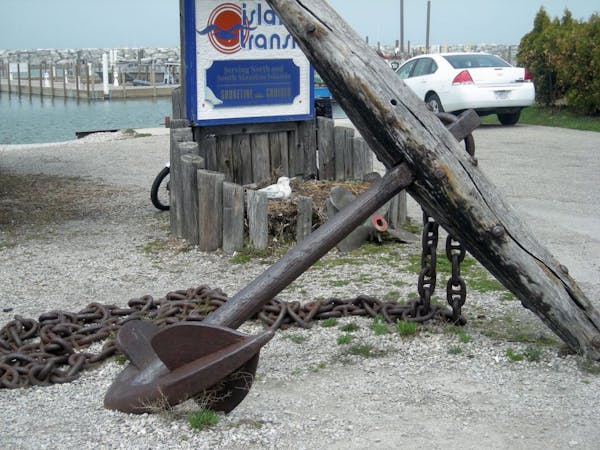Fishtown is a beloved Michigan place.
You will find its name emblazoned on countless T-shirts, sweatshirts and hats across Michigan's Up North region. It even has its own book: "Fishtown" by Bill Crandell (Sigil Publishing, $14.99).
Fishtown is the century-old commercial fishing settlement where the Leland River flows into Lake Michigan at the hamlet of Leland, about 25 miles northwest of Traverse City.
It is a place and a way of life, and that way of life is disappearing. It is one of the only unmodernized fishing villages left in Michigan, a surviving example of communities that once thrived on the Great Lakes.
The town was added to the National Register of Historic Places in 1975. Its fleet of fishing tugs and charter fishing boats work the deep blue waters of northern Lake Michigan for lake trout, salmon, whitefish and chub.
The cluster of shacks and shanties are gray and weatherbeaten, covered in faded cedar shingles. They look like something from the coast of Maine or Newfoundland. They date as far back as 1900, although the name Fishtown was not used locally until the 1940s.
There are 12 businesses in the seven historical shanties in Fishtown, plus three fishing charters that operate from the docks. The businesses offer fresh and smoked fish, artwork, cheese, shoes, tile art, crafts, eclectic jewelry and clothing.
Today Leland and Fishtown also serve as the gateway to the nearby Manitou Islands, part of the Sleeping Bear Dunes National Lakeshore. Sleeping Bear features the tallest freshwater dunes in the world, plus an 1871 lighthouse, two old Coast Guard stations, a historical farming district, inland lakes and forests (www.nps.gov/slbe).
Fishtown is not big. It's not glitzy. But it's not lacking in charm.
The core of Fishtown and two active fishing tugs are owned and operated by the nonprofit Fishtown Preservation Society. More than 1,200 donors from 46 states contributed money for the preservation group's $2.8 million purchase of the land that makes up Fishtown from a local family.
The group operates two fishing tugs, the Joy and the Janice Sue, that fish spring to fall and typically head out in the early morning once or twice a week. Last year, the Joy caught 61,000 pounds of whitefish, and the Janice Sue caught 1,400 pounds of chub.
The Leland historical district including Fishtown covers an area bounded by Main Street, Avenue A, the Leland park and the harbor. The historical integrity of the district and its buildings is strong.
As early as 1880, commercial fishermen sailed from Fishtown to set their nets offshore in search of lake trout and whitefish. The town's peak fishing years were 1900 to 1930, when it housed eight commercial fishing operations. The catch was shipped via rail to Chicago and Detroit. Other buildings in Leland date to its lumbering and iron-smelting past in the late 19th century.
Some old buildings house small shops that cater to the hordes of summer tourists. There is a small dockside boardwalk that leads to the waterfall on the Leland River. A restaurant and a lodge, dubbed the Falling Waters Lodge, flank the 12-foot-high waterfall.
Farther inland, two-story Gothic Revival structures house restaurants and shops in downtown Leland. The Bluebird restaurant at 102 River St., open since 1927, is a revered landmark known for its whitefish.
In heated western Minn. GOP congressional primary, outsiders challenging incumbent

Minnesota Sports Hall of Fame: A class-by-class list of all members

This retired journalist changed professional wrestling from Mankato

